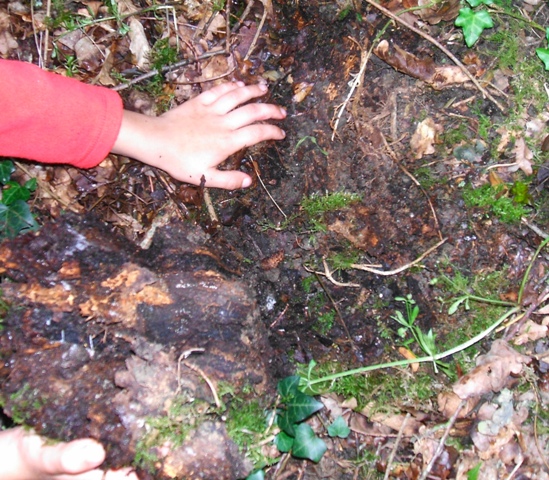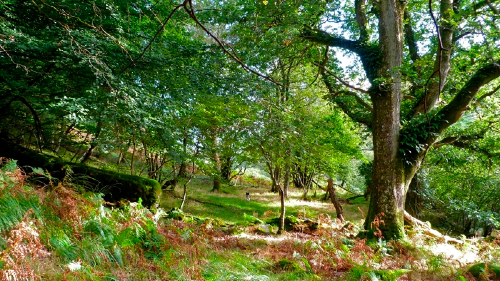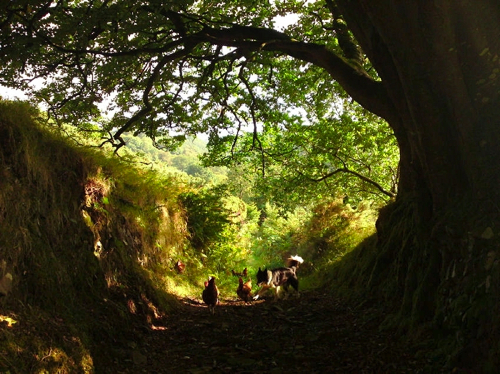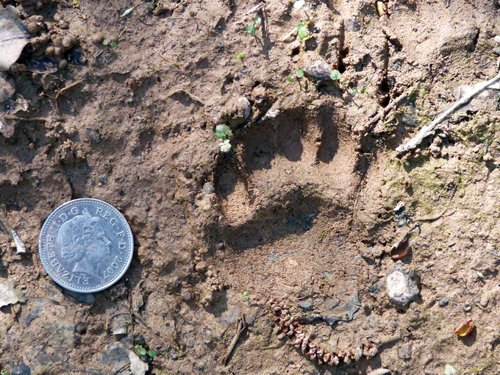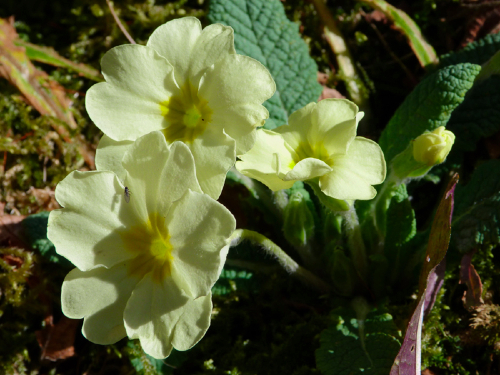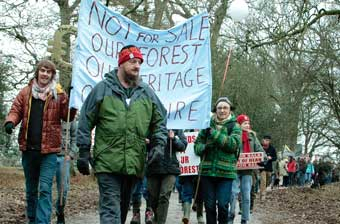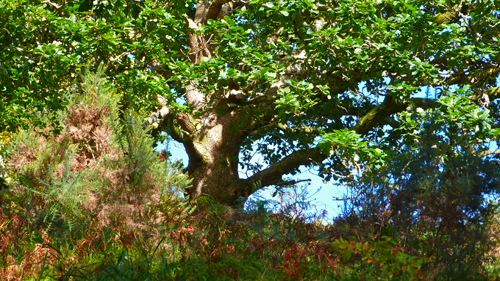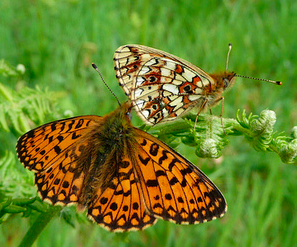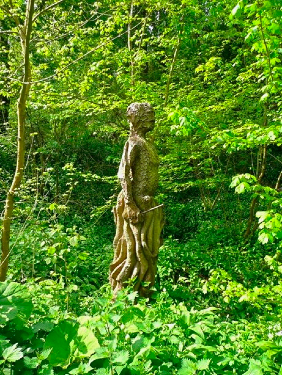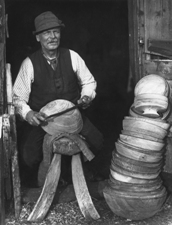Dr James Merryweather is one of the UK’s leading woodland ecologists with a special interest in Soils (and the organisms living within it), Pteridology and Bagpipes. Dr Merryweather is amongst the first woodland ecologists to champion the complexity and diversity of ancient woodland in an effort to prevent bad practice and a regularly touted belief that we can magically and instantly recreate the ancient native woodland of the British Isles. http://www.slef.org.uk/pdfs/gardening_full%20version.pdf
Here is a brief introduction by Dr Merryweather into the world below ground within a woodland..
Physically and ecologically, soil is the foundation of all terrestrial ecosystems. Its biota (‘biodiversity’) support the lives of all above ground organisms, directly or indirectly via a complex of biological interactions. “The functioning of this thin dark covering on the surface of the earth is vital for the survival of the biosphere in its present form. Species of soil biota are tightly linked functionally to above-ground biotic interactions. They perform ecological services that strongly impact the quality of human life …”
Life In The Soil¹
“Few things matter more to human communities than their relations with the soil. The biology of soil is of fundamental importance to the sustainability of life on earth … soil remains the least understood, and perhaps the most abused, habitat on Earth”. Prof. Richard Bardgett²
“Virtually all terrestrial ecosystems are founded on soil. Plants rely on it for water and nutrients, as consequently does everything else in the ecosystem, including us. Yet our species’ blithe disregard for soil is evidence of our reluctance to understand its fundamental role in our welfare. Many of the great ecological disasters in history occurred when inappropriate farming techniques were applied to fragile soils, a well known example being the dustbowl of the American mid-west that inspired John Steinbeck’s classic novel The Grapes of Wrath … Our appetite for destroying soils continues.”
Prof. Alastair Fitter FRS³
Soil biodiversity is extraordinarily high: “Below ground biodiversity usually exceeds that which prevails above ground by orders of magnitude. From virtually any perspective, the soil biota are exceptionally diverse. Numerically, 100 g of typical temperate grassland soil contains of the order 1011 prokaryotes, 10,000m of fungal hyphae, 10,000,000,000 yeasts, 1,000,000 protozoa, 100,000 Nematodes, and thousands of worms, mites, collembolan and other fauna. Embedded within this numerically huge community are tens of thousands of genetically distinct bacteria and archea, thousands of fungal species, and hundreds of protozoan, nematode, worm, insect and arachnid species.
“Thus biodiversity below ground equals or exceeds that of the tropical rainforest canopy, and just as there are many unrecorded species in the rainforest, we know very little in detail about the true range of species in the soil.” Bryan Griffiths, Scottish Crop Research Institute.
Or, put another way:
In one acre of a typical British woodland system there are:
• 110 tons of trees
• 1 lb of birds
• 21 lb of large animals
• ½ ton of plants
• 1½ tons of fungi
• 4½ lb of small mammals
• 500 lb of earthworms
• 9 lb of beetles
• 50 lb of spiders
• 90 lb of slugs & snails
• 4 tons of bacteria
• 340 lb of protozoa
M. Allaby
Or: “Each shovel of soil holds more living things than all the human beings ever born.”
“Soils often have between 1,000,000 to 10,000,000 bacteria per gramme.”
“A teaspoon of forest soil may hold more than 10 miles of fungi and 1 gramme of garden soil can contain around one million fungi.”
Soil is not only the terrestrial habitat with the highest biodiversity, it is also a component of every terrestrial habitat and contains more than half of the biodiversity in each.
500 million years of co-evolution has resulted in the lives of soil and above ground communities becoming interlinked: interactive. Soil communities can be major determinants of above ground biodiversity and community dynamics. Therefore, if soil communities in diverse natural ecosystems are damaged, above ground communities suffer in consequence. Similarly, if above ground vegetation is damaged or eliminated, the below ground community suffers, though we can only see the symptoms and then only if we are aware of them. If damage is severe, community structure collapses.
Even though soil has not been given appropriate attention, its vital importance in ecosystem functioning must be embraced from now on. Research should be left to researchers. Our part will be to take advantage of what is already known and apply it to considerations of habitat protection, habitat remediation and habitat disturbance and destruction by agencies who do not have the knowledge upon which to base ecological Good Practice through soil protection in their work.
The most important first step would be to improve peoples’ knowledge and raise their awareness of above ground processes in relation to those below ground – to understand the countryside with a mind that take in whole ecosystems instead of considering only what can be seen with the eyes.
A major problem is peoples’ perception of plants grow, i.e. as individuals in a homogeneous, sterile, mineral-organic medium (often misleadingly called ‘soil’) to which is added all the nutrients a plant might need, constantly topped up and the system artificially kept free of pests and diseases. This works for a number of plants given constant attention, but is un-natural. Some plants are not amenable to such treatment and we call them intractable, ignoring the fact that the do grow in the wild.
In nature, soils such as have been supporting plants and (indirectly) animals for the past 500 million years, are very different. During that time, below ground and above ground communities have evolved together in a complex global web of partnership – symbiosis?. Natural soils are the structured, stratified home of an unseen and generally unacknowledged army of mostly microscopic organisms without which above ground communities would not exist. We harm them at our peril. Without soil the trees would fall over and the birds would have nowhere to perch.
by James Merryweather
¹ Soil biodiversity: its importance to ecosystem processes. Report of a workshop held at the Natural History Museum, London, England. Aug. 30 – Sept. 1 1994. http://www.nrel.colostate.edu/projects/soil/lifeinthesoil.html
² The Biology of Soil, 2005
³ Darkness visible: reflections on underground ecology. J. Ecol., 2005. 93, 231-234
? Two or more organisms living together and surviving the experience. Symbiosis does not necessarily consist of as few as two organisms and can involve an entire landscape. Also, it does not necessarily benefit all partners, but it does promote the overall health and existence of communities and community processes whilst not causing local or global extinctions.
For more reading of Dr Merryweather’s work:
http://www.slef.org.uk/mycorr.html
http://www.highlandbiodiversity.com/htm/soil_biodiversity_week/soil_biodiversity_week.php
http://www.merryweather.me.uk/





